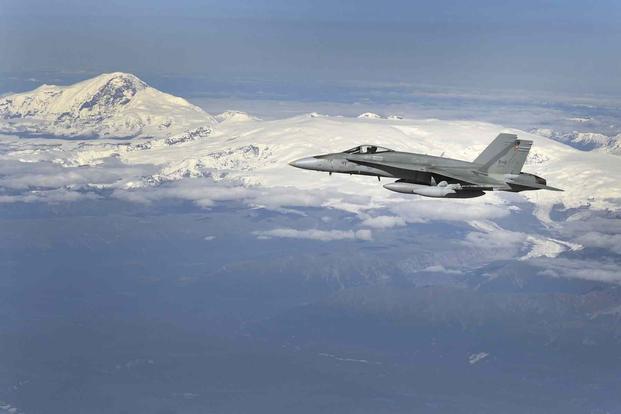Read the original article on Business Insider.
Almost 25 years ago, a large runaway weather balloon proved to be quite challenge a for a pair of fighter jets trying to shoot it down, staying in the air even after more than 1,000 rounds were fired at it.
The research balloon was measuring ozone levels above Canada, the Associated Press reported at the time. It went rogue in August 1998, passing across Canada, over the Atlantic Ocean, and through British airspace before entering Iceland's airspace and then drifting northward.
Two Royal Canadian Air Force CF-18 fighter aircraft spotted the balloon over Newfoundland and fired more than 1,000 rounds at it. The AP reported that the jets, Canadian variants of the American F/A-18 Hornet, hit the balloon, but rather than popping or exploding and crashing to the earth, it slowly began leaking helium. The big balloon was still in the air.
A Canadian military spokesperson, a lieutenant named Steve Wills, told BBC that it was difficult to target the balloon, even though it was about the size of a 25-story building, and that the failure to take it out wasn't embarrassing.
"With something like this, which is stationary in the air when the CF-18s are flying very, very fast, it is difficult to shoot it," Wills said.
The CF-18s were reportedly equipped with air-to-air missiles, but Canadian Major Roland Lavoie told AP the pilots refrained from using them.
"Citizens would not have appreciated having a missile blowing over their heads,″ he said. "Also, it might be overkill spending a couple of hundred thousand dollars on a missile to shoot down a balloon that's drifting away."
The balloon, BBC reported, also survived encounters with British and American aircraft.
According to BBC reports from the time of the incident, the 300-ft helium balloon prompted air traffic controllers to divert and delay transatlantic flights. If deflated, the balloon would cover an area of about five football fields, The Irish Times reported.
The U.S. currently has a Chinese balloon, which Pentagon officials say is an intelligence-gathering spy balloon but China argues is a research asset, in its airspace, and there have been questions about shooting it down.
Brigadier Gen. Pat Ryder, the Pentagon press secretary, said Thursday that the balloon is operating at a higher altitude than commercial air traffic and "does not present a military or physical threat to people on the ground." Nonetheless, the US scrambled F-22 Raptors and other aircraft in response.
Ryder said there were no current plans to shoot down the balloon. Even with protective measures, "it was the judgment of our military commanders that we didn't drive the risk down low enough, so we didn't take the shot," he said.
Ryder also said there were multiple recommendations from senior Department of Defense officials "not to take kinetic action due to the risk to safety and security of people on the ground from the possible debris field."
"We wanted to, you know, take care that somebody didn't get hurt or property wasn't destroyed," he said, detailing that the balloon is large enough to cause damage from a debris field.










